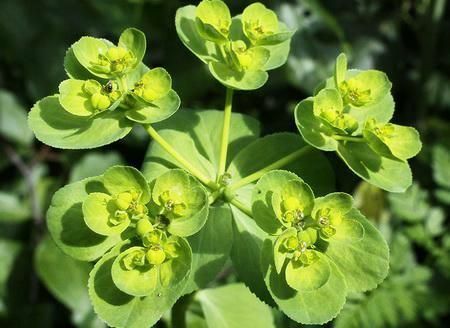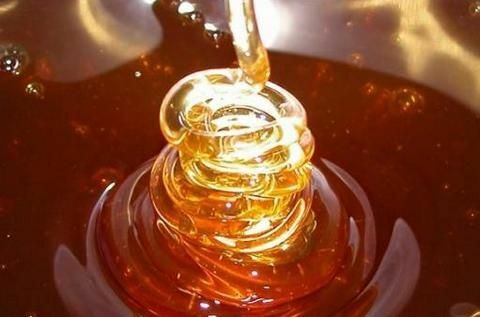Euphorbia is a very unusual honey plant. Its roots are capable of deepening to a depth where no other plant can penetrate. Thus, he becomes the sole owner of all mineral substances lying deep in the earth's crust, in particular, iodine and iron.

Useful properties of honey from milkweed are to no small extent formed by these two minerals, which contribute to the functions of hematopoiesis, body cleansing from toxins, improvement of brain activity and much more.
What is honey from the milkweed?
Honey produced by bees from milkweed has an amber dark color, a liquid consistency, a peculiar aroma and a specific bitter-tart taste, the culprit of which is iodine, which is largely contained in this product. It is a bit like a chestnut, famous for its bitter taste and dark brown color.

Over time, the unpleasant aftertaste is slightly blunted. Perhaps this is due to the volatility of iodine, which evaporates from the surface and its content in the product decreases accordingly.
Pollen of milkweed is not suitable for feeding bee, so on the grounds, completely overgrown with this plant, the swarm very quickly weakens, as the hive is not replenished with new labor.
Honey does not lose its healing properties for quite some time. When stored under optimal conditions, it retains a liquid consistency for a long time, often this process is delayed for a year, or even two. During crystallization, a sticky mass of chocolate color is formed.
An interesting fact! The length of the root system of the milkweed can reach 12 m in depth, which means that even in the driest and hottest time of the year, when all other plants suffer from a lack of moisture, they will get water from underground sources and share their nectar with bees.
Useful qualities of honeydew
Useful properties of honeydew honey are used to treat the following diseases:

- sclerosis;
- rheumatism;
- of insomnia;
- of thyroid disorders;
- of varicose veins;
- anemia;
- urolithiasis;
- gastritis;
- ulcers;
- depression;
- liver disease.
Tart nectar helps to cleanse vessels of toxins, which prevents the development of cardiovascular diseases, in particular, sclerosis, heart attack and stroke. To make honey even more effective in combating heart and vascular diseases, it is good to enrich it with another product of beekeeping - perga. You can learn more about it from the article: Useful properties of bee pengu - And our brains work better!
The high content of iodine helps to improve memory, improve muscle tone and strengthen nerves. Iron, also in large quantities contained in the honeydew, helps to produce hemoglobin, which is very useful for people suffering from anemia and anemia.
Useful properties of honeydew honey do not end there. High content of vitamins and environmentally friendly minerals make it a valuable source of biologically active substances. With avitaminosis, this tart treat will replace expensive vitamin and mineral complexes, in a short time, replenishing the deficiency of substances necessary for health.
Tip! With chronic fatigue and insomnia, a cup of warm tea with a teaspoon of milk of milk is good. Contained therein iodine will strengthen the loosened nerves and increase the resistance of the nervous system to stress.
What else should you know about milk jelly?
Honey from the milkweed comparatively recently appeared on the market of beekeeping products. This is due to the fact that for the production of nectar this seemingly unpretentious plant, requires a fairly high temperature - 25 - 30 0C.In conditions of global warming, this became possible. At the same time, all other honeycombs dry up in this heat, and the bees have no choice but to collect pollen from this weed.
Small harvesters of especially young honey from the pasture fields. The juice of the milkworm is poisonous by itself, so the animals do not touch it. Growing up, this weed grabs vast areas, displacing fodder plants. A lot of it contributes to its extreme vitality. Euphorbia in abundance receives the necessary substances and water from deep layers of soil, when plants with smaller roots are starving and dry under the scorching rays of the sun.
For a season with hayfields, bees can produce approximately 40-50 kg of honey. However, if there are no other medonoses, the bee swarm is chopped and will die in the winter, so beekeepers try to protect their apiary from the thickets of this prolific weed.
Interesting fact! Euphorbia is the most numerous genus of the Echinaceae family. In total there are about 2000 species, many of which are cultivated and grow in clay pots as a houseplant.
How does the spurge in nature look like in this video:
